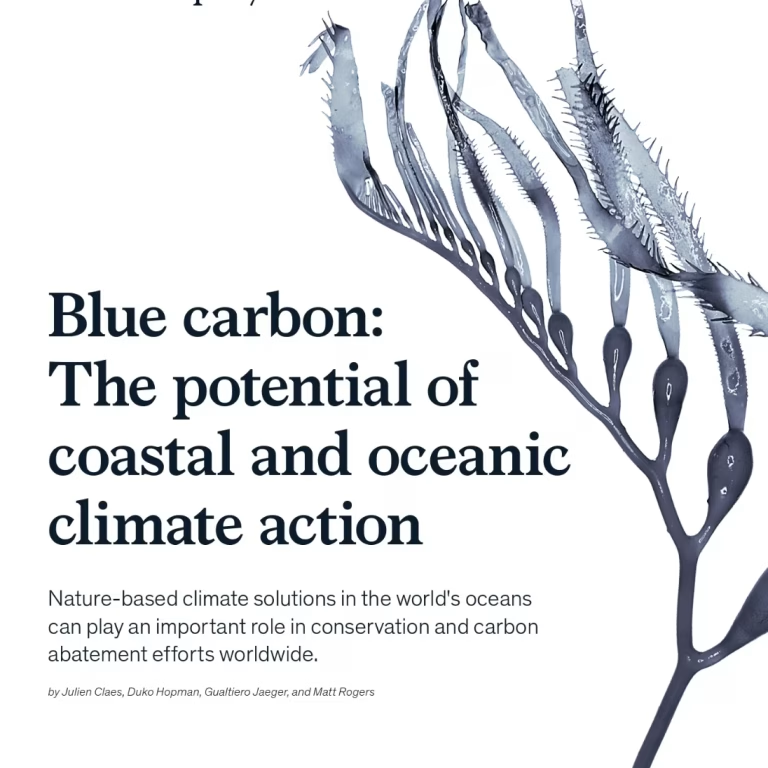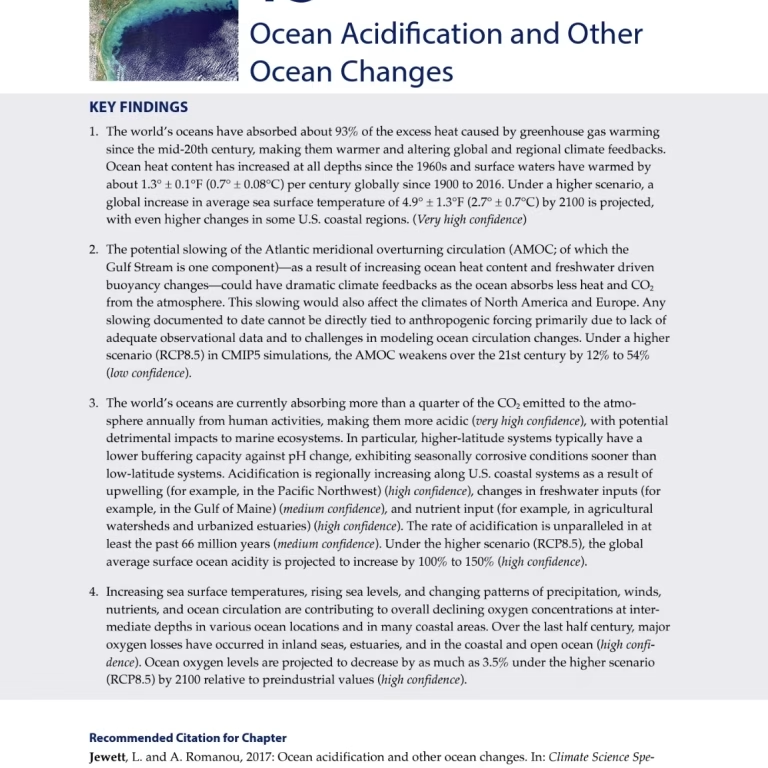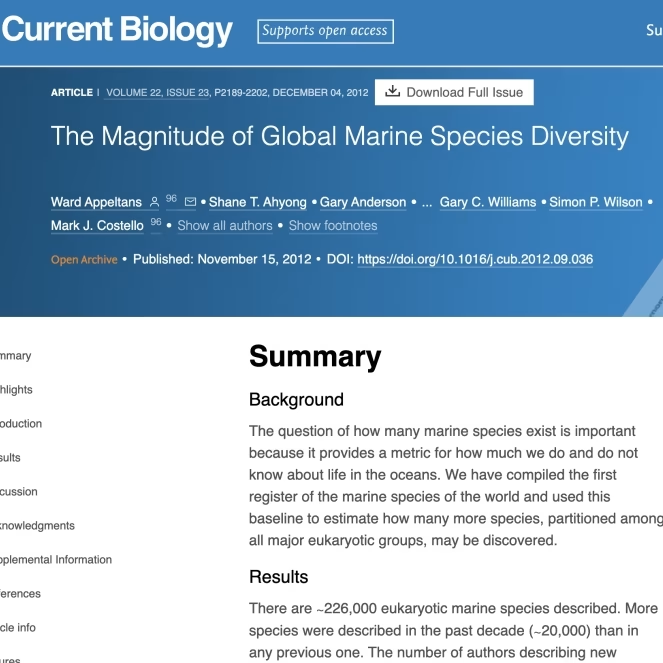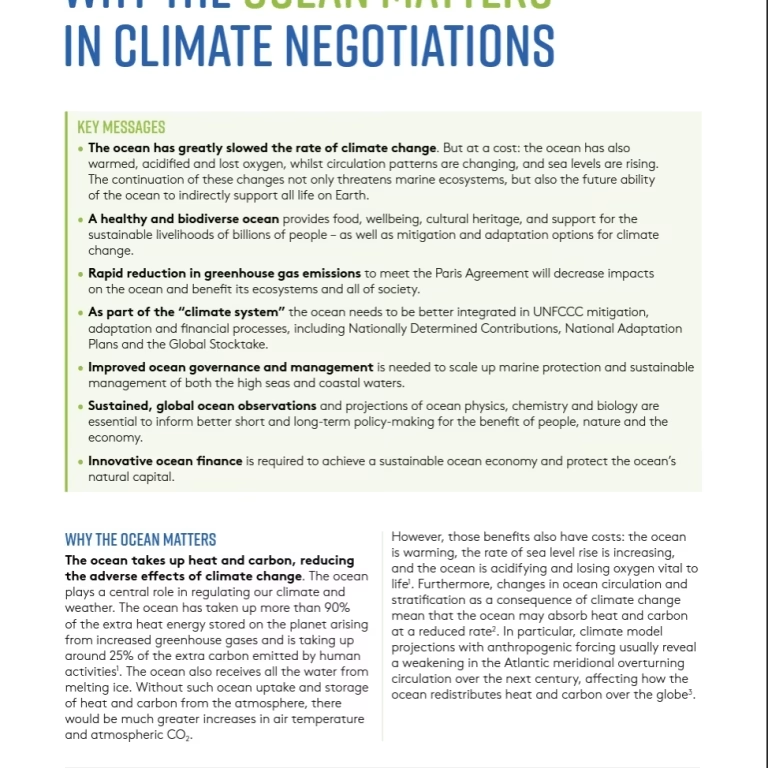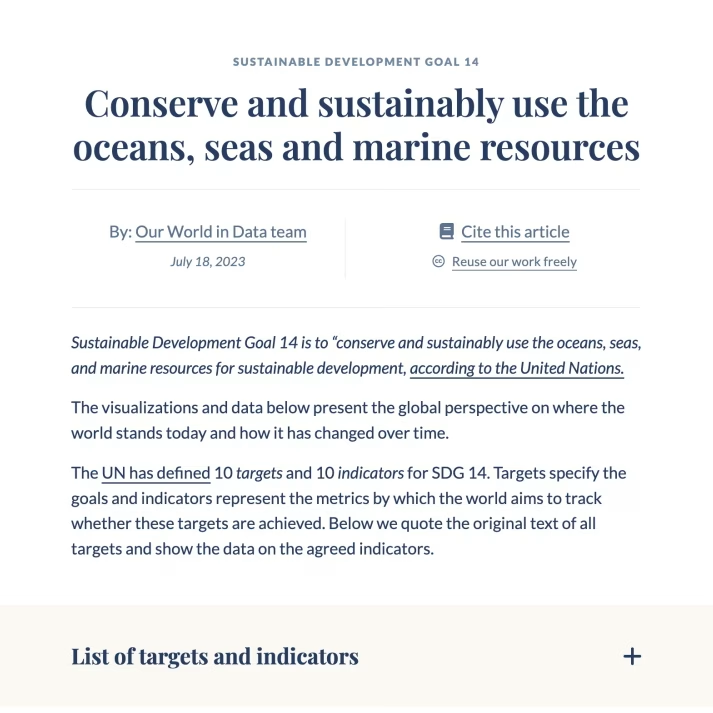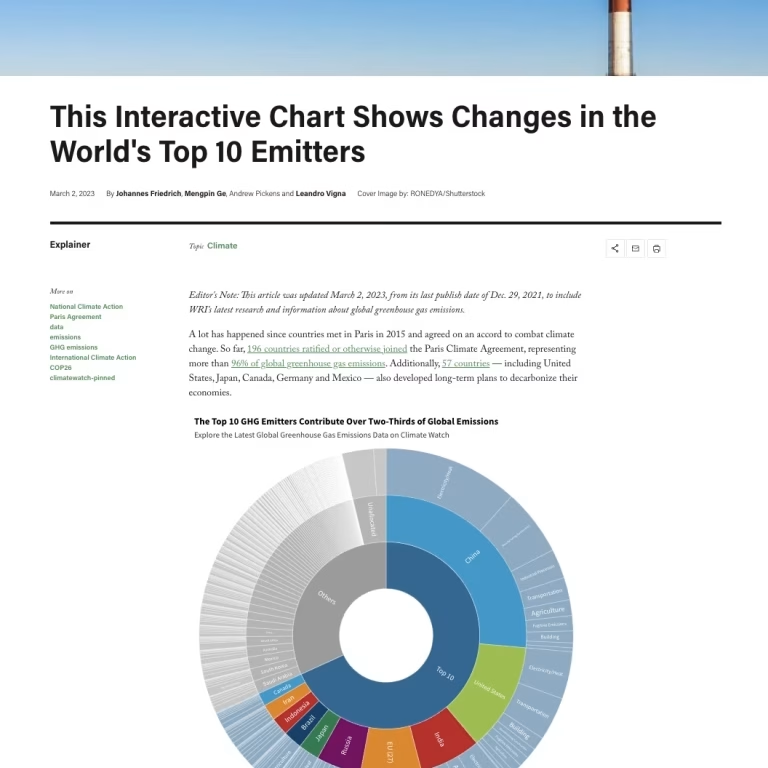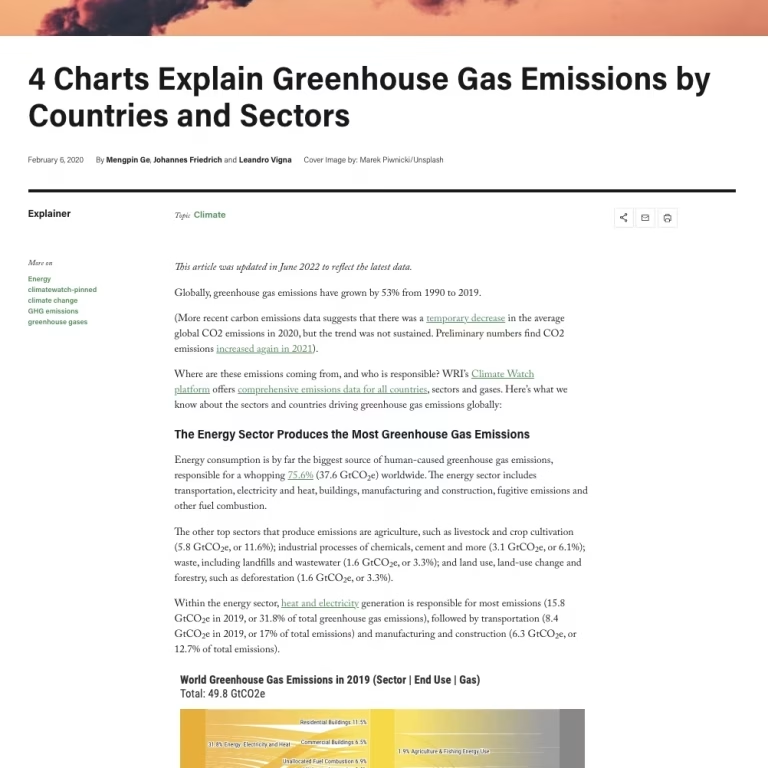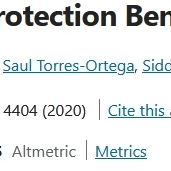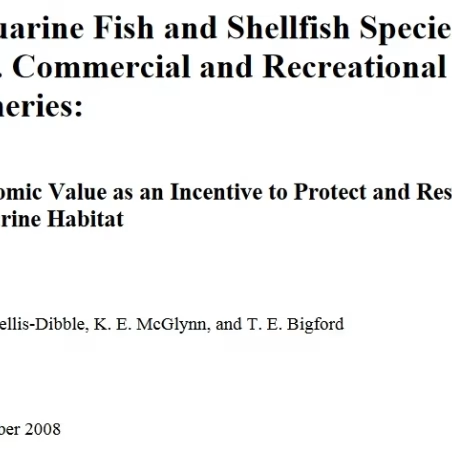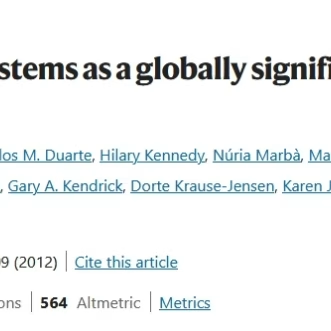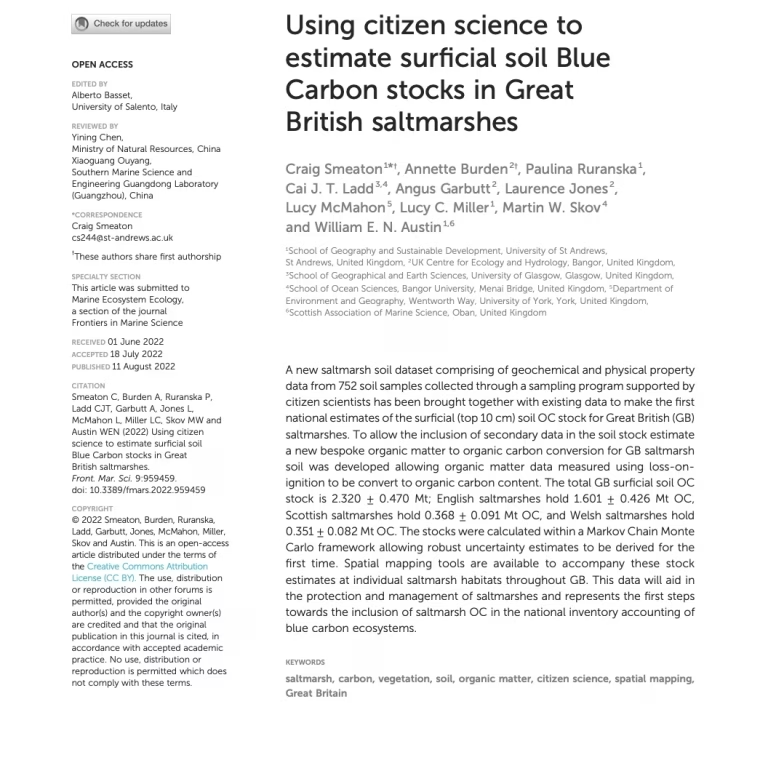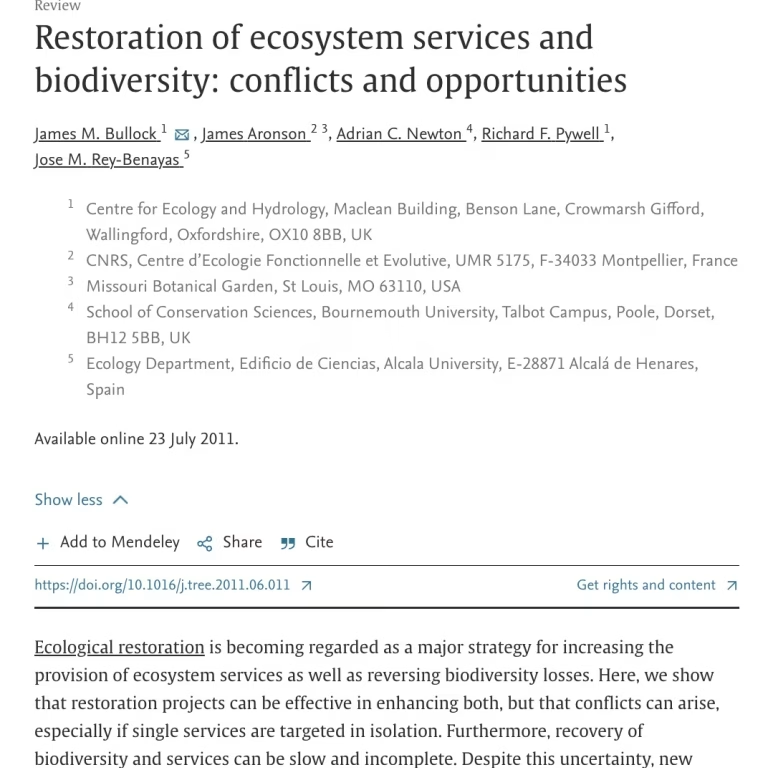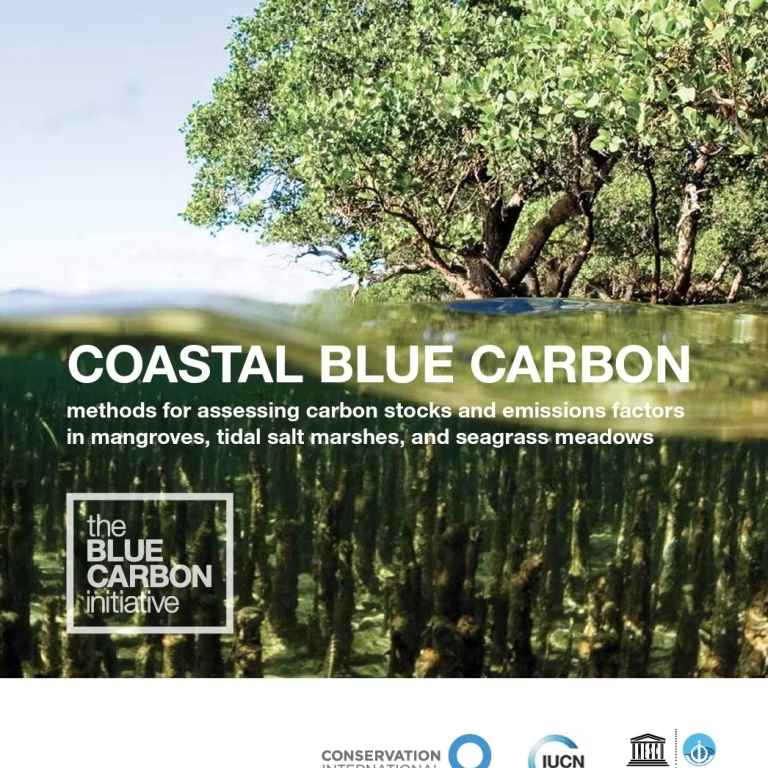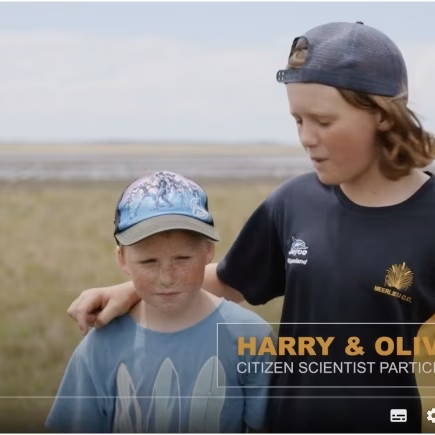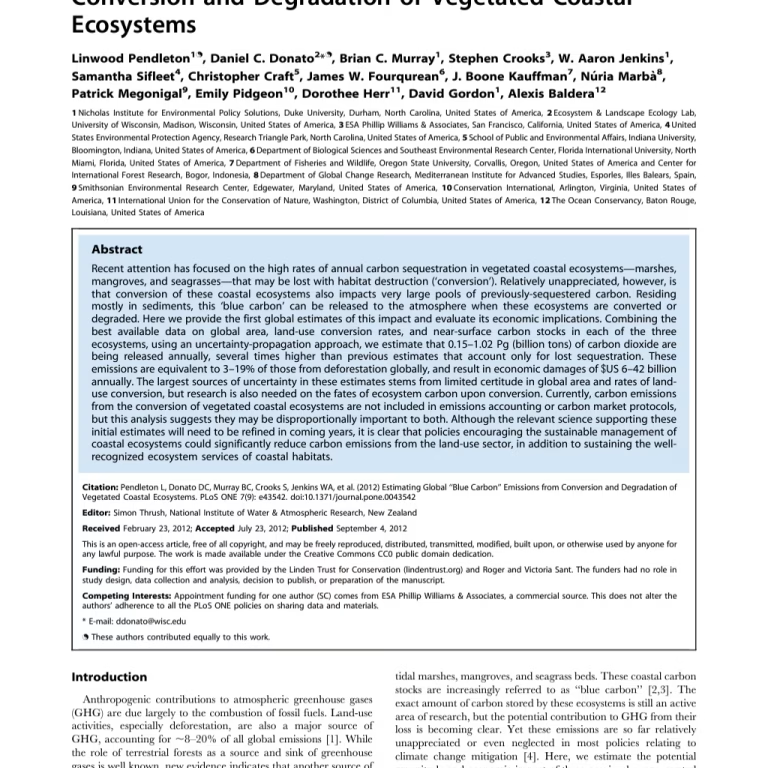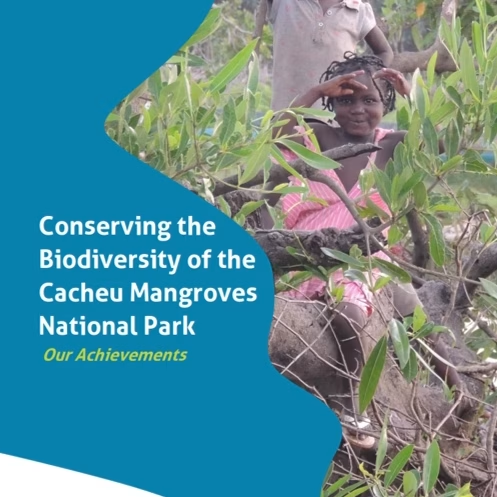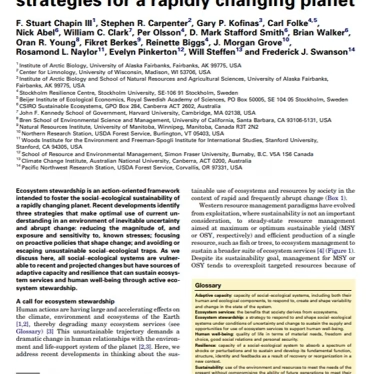Resource Library
- All
- Further Reading
- Infographic
- Map
- Online Article
- Online Exercise
- Photo
- Report
- Scientific Article
- Story Map
- Teaching Material
- Tools
- Video
- Website
Blue Carbon: The potential of coastal and oceanic climate action
The oceans and coasts are the Earth’s climate regulators. Covering 72 percent of the planet’s surface, they have absorbed about 40 percent of carbon emitted by human activities since 1850.1 Coastal ecosystems such as mangroves, tidal marshes, and seagrass meadows act as deep carbon reservoirs, while marine ecosystems and fauna absorb and sequester greenhouse gases…
Ocean Acidification and Other Ocean Changes
The world’s oceans have absorbed about 93% of the excess heat caused by greenhouse gas warming since the mid-20th century, making them warmer and altering global and regional climate feedbacks. Ocean heat content has increased at all depths since the 1960s and surface waters have warmed by about 1.3° ± 0.1°F (0.7° ± 0.08°C) per…
The Magnitude of Global Marine Species Diversity
The question of how many marine species exist is important because it provides a metric for how much we do and do not know about life in the oceans. We have compiled the first register of the marine species of the world and used this baseline to estimate how many more species, partitioned among all…
Why the Ocean Matters in Climate Negotiations
The ocean takes up heat and carbon, reducing the adverse effects of climate change. The ocean plays a central role in regulating our climate and weather. The ocean has taken up more than 90% of the extra heat energy stored on the planet arising from increased greenhouse gases and is taking up around 25% of…
SDG 14: Conserve and sustainably use the oceans, seas and marine resources
Sustainable Development Goal 14 is to “conserve and sustainably use the oceans, seas, and marine resources for sustainable development, according to the United Nations. The visualizations and data of this resource presenst the global perspective on where the world stands today and how it has changed over time.
This Interactive Chart Shows Changes in the World’s Top 10 Emitters
A lot has happened since countries met in Paris in 2015 and agreed on an accord to combat climate change. So far, 196 countries ratified or otherwise joined the Paris Climate Agreement, representing more than 96% of global greenhouse gas emissions. Additionally, 57 countries — including United States, Japan, Canada, Germany and Mexico — also…
4 Charts Explain Greenhouse Gas Emissions by Countries and Sectors
Globally, greenhouse gas emissions have grown by 53% from 1990 to 2019. Where are these emissions coming from, and who is responsible? WRI’s Climate Watch platform offers comprehensive emissions data for all countries, sectors and gases. Here’s what we know about the sectors and countries driving greenhouse gas emissions globally.
Value Theory
Multiattribute value theory (MAVT) is a simplification of MAUT: MAVT does not seek to model the decision maker’s attitude to risk.
The Global Flood Protection Benefits of Mangroves
Coastal flood risks are rising rapidly. We provide high resolution estimates of the economic value of mangroves forests for flood risk reduction every 20 km worldwide. We develop a probabilistic, process-based valuation of the effects of mangroves on averting damages to people and property. We couple spatially-explicit 2-D hydrodynamic analyses with economic models, and find that…
Estuarine fish and shellfish species in U.S. commercial and recreational fisheries : economic value as an incentive to protect and restore estuarine habitat
Commercial and recreational fisheries generate billions of dollars each year for the U.S. economy. In 2006, 9.5 billion pounds of commercial catch was valued at $4.0 billion. This value is enhanced by the recreational fishing sector, whose 13 million recreational anglers caught 476 million fish in 2006, generating billions of dollars via small businesses such…
Seagrass ecosystems as a globally significant carbon stock
The protection of organic carbon stored in forests is considered as an important method for mitigating climate change. Like terrestrial ecosystems, coastal ecosystems store large amounts of carbon, and there are initiatives to protect these ‘blue carbon’ stores. Organic carbon stocks in tidal salt marshes and mangroves have been estimated, but uncertainties in the stores…
Using Citizen Science to Estimate Surficial Soil Blue Carbon Stocks in Great British Saltmarshes
A new saltmarsh soil dataset comprising of geochemical and physical property data from 752 soil samples collected through a sampling program supported by citizen scientists has been brought together with existing data to make the first national estimates of the surficial (top 10 cm) soil OC stock for Great British (GB) saltmarshes. To allow the…
Restoration of Ecosystem Services and Biodiversity: Conflicts and Opportunities
Ecological restoration is becoming regarded as a major strategy for increasing the provision of ecosystem services as well as reversing biodiversity losses. Here, we show that restoration projects can be effective in enhancing both, but that conflicts can arise, especially if single services are targeted in isolation. Furthermore, recovery of biodiversity and services can be…
Blue Carbon Quiz
Test your knowledge on blue carbon ecosystems by taking this short quiz by the High Level Panel for A Sustainable Ocean Economy.
Coastal Blue Carbon: Methods for assessing carbon stocks and emissions factors in mangroves, tidal salt marshes, and seagrass meadows
Mangroves, tidal salt marshes, and seagrasses sequester and store significant amounts of coastal blue carbon from the atmosphere and ocean and are now recognized for their role in mitigating climate change. Conservation and restoration of these coastal ecosystems has been increasingly addressed in international and national climate change mitigation policy and finance mechanisms. The International…
Wetland Restoration Citizen Science Program
This short video presents the role of citizens for blue carbon assessment: the Wetland Restoration Citizen Science Program (Australia), also known as the Blue Carbon Army.
Estimating Global “Blue Carbon” Emissions from Conversion and Degradation of Vegetated Coastal Ecosystems
Recent attention has focused on the high rates of annual carbon sequestration in vegetated coastal ecosystems – marshes, mangroves, and seagrasses – that may be lost with habitat destruction (‘conversion’). Relatively unappreciated, however, is that conversion of these coastal ecosystems also impacts very large pools of previously-sequestered carbon. Residing mostly in sediments, this ‘blue carbon’…
Kunming-Montreal Global Biodiversity Framework and 2030 Targets
The Kunming-Montreal Global Biodiversity Framework has 23 action-oriented global targets for urgent action over the decade to 2030. The actions set out in each target need to be initiated immediately and completed by 2030. Together, the results will enable achievement towards the outcome-oriented goals for 2050.
Conserving Biodiversity of the Cacheu Mangroves National Park at Guinea Bissau
From 2015 to 2018 Wetlands International, IBAP and other partners implemented a ground-breaking initiative to conserve the mangroves, tidal flats, dryland forests and seagrass beds of Cacheu national park and its buffer zone in Guinea Bissau.
Ecosystem Stewardship: Sustainability Strategies for a Rapidly Changing Planet
Explanation of an action-oriented framework intended to foster social-ecological sustainability of a rapidly changing planet.

